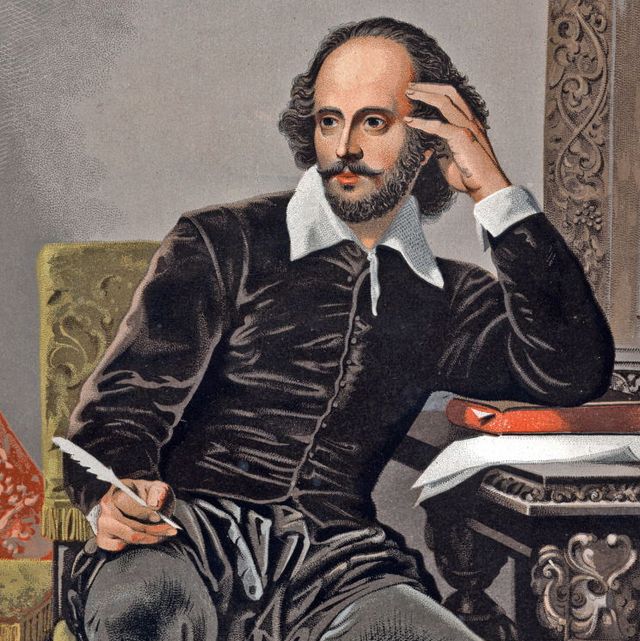This story is a collaboration with Biography.com.
In the annals of William Shakespeare’s legacy, a twist has emerged that’s practically as dramatic as any of the Bard’s plays: the real “Shakespeare” behind a centuries-old family document has been revealed ... and it’s not the man we expected.
In 1757, a bricklayer found a religious document hidden in the rafters of the Shakespeare House in Stratford-upon-Avon, England. Historians have long attributed the document, which was signed, “J. Shakespeare,” to William’s father, John.
But a new study in Shakespeare Quarterly, from scholars at the University of Bristol, claims John wasn’t actually the writer of the scrutinized document. Instead, the researchers say it was William’s relatively unknown younger sister, Joan Shakespeare Hart, who is mentioned by name in only seven surviving documents from her lifetime, study author Matthew Steggle said in a statement:
“Virginia Woolf wrote a famous essay, Shakespeare’s sister, about how a figure like her could never hope to be a writer or have her writing preserved, so she has become something of a symbol for all the lost voices of early modern women. There are hundreds of thousands of works surviving from her brother, and until now, none at all, of any description, from her.”
In the tucked-away document, which heavily cites an obscure 17th century Italian religious tract called The Last Will and Testament of the Soul, the writer pledges to die a good Catholic death. If the writer was indeed John Shakespeare, who remained a devout Protestant until his death in 1601, it would have indicated a major shift in his beliefs and suggested a clandestine life during an era when secret allegiance to the Catholic Church in Elizabethan England could have been dangerous. For this reason, many experts have suspected the document to be forged.
But in the new study, Steggle used internet archives to track down early editions of The Last Will and Testament of the Soul in Italian and six other languages and concluded the document could have only been written after John Shakespeare’s death. That left Steggle with just one other “J. Shakespeare”: Joan.
Joan, who was five years younger than William, survived for 30 years after her brother’s death, and long resided in the family home where the document was found.
“Even 30 years ago, a researcher approaching a problem like this would have been based in a single big research library, using printed catalogues and even card catalogues to try to find copies of this text,” Steggle said in the statement. “But research libraries have now made many of their resources available digitally, so that it is possible to look across many different libraries in different countries at once, and what’s more, you can look through the whole text, not just at the title and other details.”
Steggle emphasized the importance of this approach in aligning the document’s quotes with the original timing of the composition of The Last Will and Testament of the Soul. Joan, then, who outlived her tradesman husband and had four children in the old Shakespeare family house, had to have been the secret Catholic supporter.
The mystery flourished for centuries, in part, because William Shakespeare himself was a secretive figure, Biography writes.
Shakespeare, who lived from 1564 to 1616, left behind no letters, no handwritten manuscripts, few contemporary accounts, and only six signatures, all spelled differently. It seems almost unbelievable to scholars and critics that the country boy from Stratford-upon-Avon who never attended university wrote 37,000 words for his plays and added roughly 300 words to the English vocabulary.
Yet, the scarcity of Shakespeare’s personal artifacts does little to dim the luster of his legacy, which stands in stark contrast to his modest, mysterious origins.
The early years of Shakespeare’s life are murky. According to Biography, he was born to a father, John, who managed a portfolio as a landowner, moneylender, local official, and glover and leather craftsman. Instead of pursuing higher education, Shakespeare’s knowledge was gleaned from life experiences, absorbing wisdom from his dad’s civic engagements and perhaps gaining insights from his son-in-law, who was a doctor.
The idea that Shakespeare kept his London-based professional life separate from his personal life in Stratford-upon-Avon plays into the recent findings regarding his sister, Joan. “This secretive attitude,” Biography writes, “may have been because much of his family were known Catholic sympathizers and chose to live quietly in Protestant Elizabethan England. In fact, some believe Shakespeare himself received Catholic communion on his death bed.”
Shakespeare wasn’t known to be loud and boisterous; instead, he carried an air of mystery, relishing the relative anonymity provided by Stratford life. Following his marriage to Anne Hathaway and the birth of their children, there’s a seven-year gap in his historical record. These are known as the “lost years.”
Speculation about William Shakespeare’s “lost years” varies widely; some suggest he may have been in hiding due to accusations of poaching, while more substantiated theories propose he was making a living as an actor and playwright in London. But despite this period of obscurity, Shakespeare’s reputation flourished through his poetry, sonnets, and plays.
As a prominent member of the Lord Chamberlain’s Men, a renowned London acting company, Shakespeare invested in his craft, and his financial success allowed him to buy New Place, one of the largest houses in Stratford-upon-Avon. Shakespeare’s theatrical endeavors didn’t stop there; in collaboration with fellow actors, he started the iconic Globe Theater, which became synonymous with his celebrated playwriting and solidified his legacy.
As Shakespeare grew his name in London’s theaters, he simultaneously established himself as a prominent figure in his hometown of Stratford. Acquiring the family estate in 1601 and subsequently purchasing 107 acres the following year, he strategically invested in additional properties. Experts suggest that the income from leasing these lands gave him the financial stability to pursue his writing.
Meanwhile, Joan resided in the Shakespeare family home amidst speculation and secrets. And its rafters served as a vault for her Italian-inspired religious writings—a hidden gem that’s still sparking scholarly intrigue, and revealing new layers to the Shakespeare legacy today.
Tim Newcomb is a journalist based in the Pacific Northwest. He covers stadiums, sneakers, gear, infrastructure, and more for a variety of publications, including Popular Mechanics. His favorite interviews have included sit-downs with Roger Federer in Switzerland, Kobe Bryant in Los Angeles, and Tinker Hatfield in Portland.















